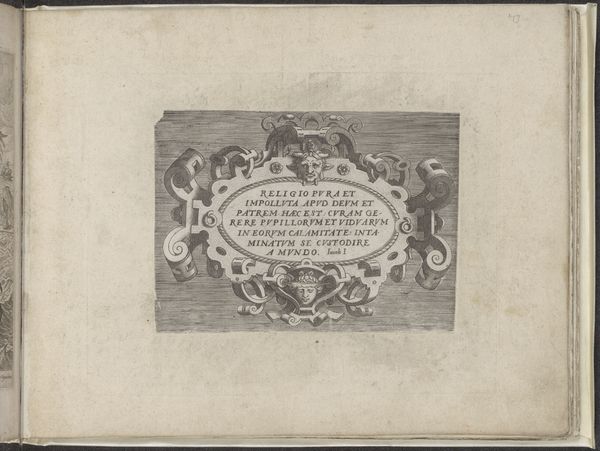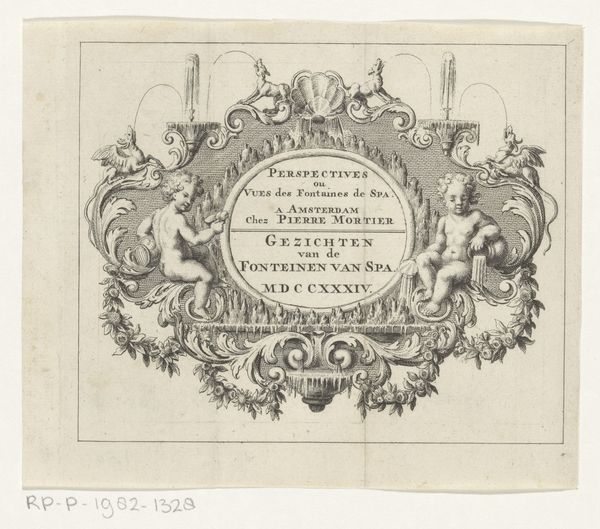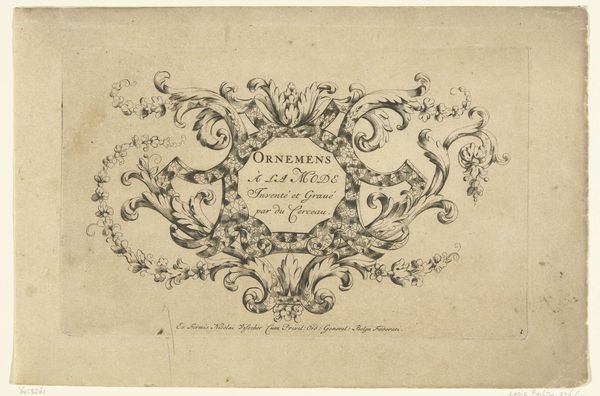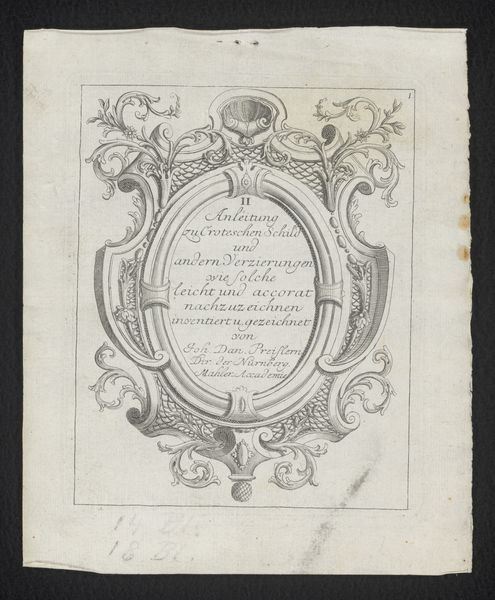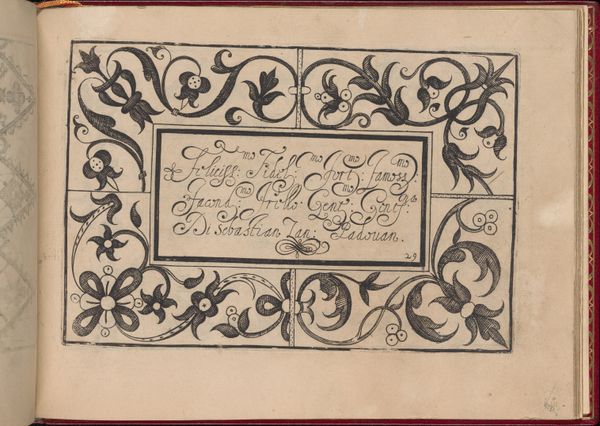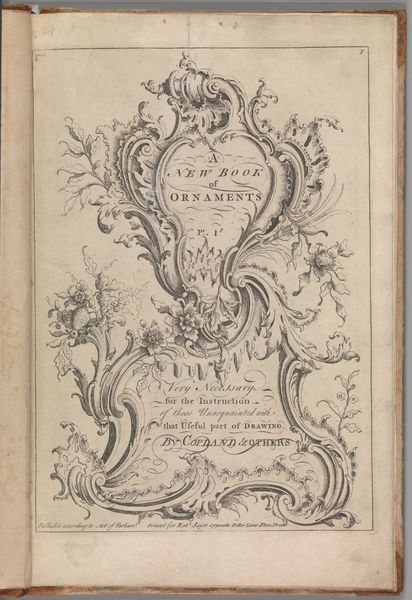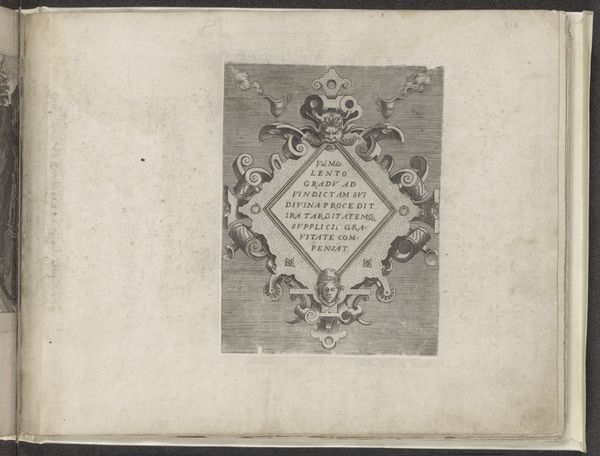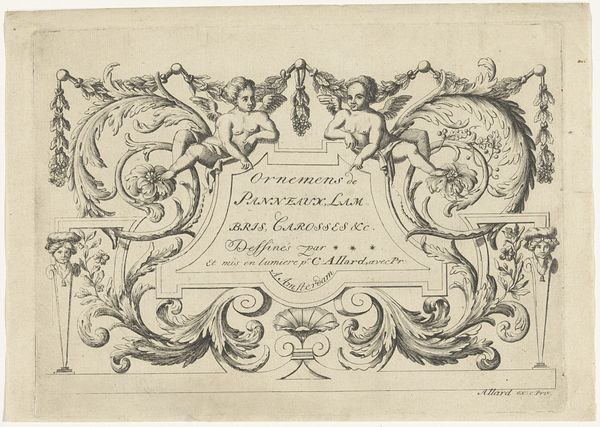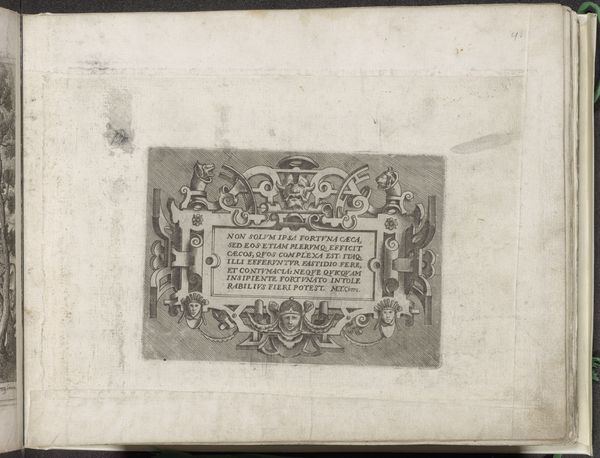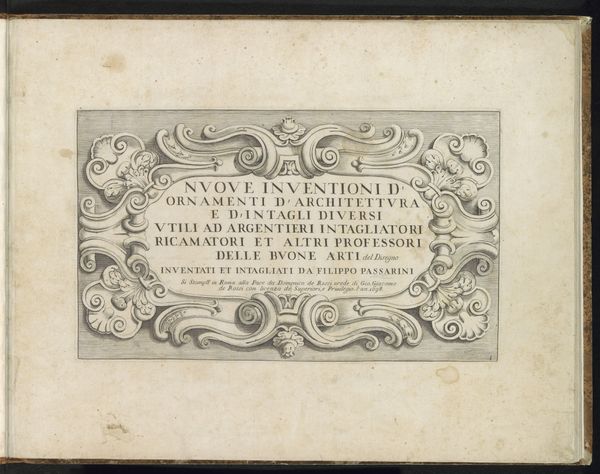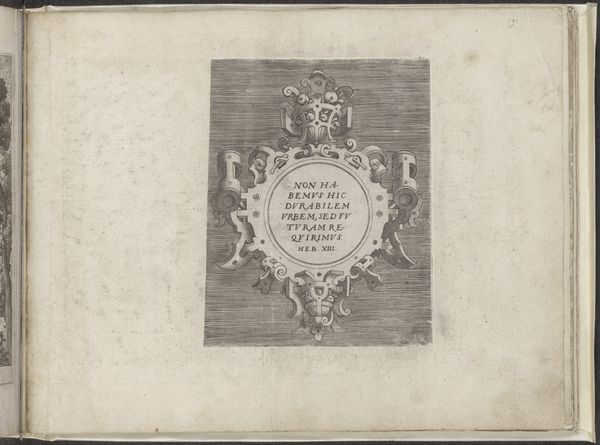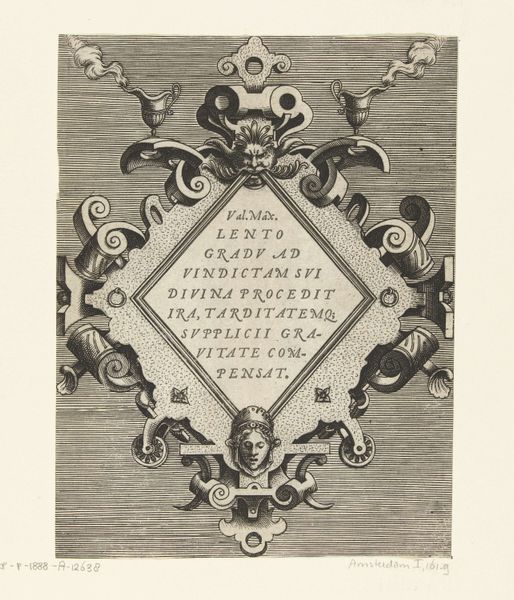
Title Page: 24 Caricatures by Several Ladies, Gentleman, Artists, &c. 1771
0:00
0:00
drawing, graphic-art, print, engraving
#
drawing
#
graphic-art
# print
#
caricature
#
engraving
Dimensions: plate: 4 7/8 x 7 1/16 in. (12.4 x 17.9 cm) sheet: 8 13/16 x 5 7/16 in. (22.4 x 13.8 cm)
Copyright: Public Domain
Curator: I'm immediately drawn to the intricate details and how meticulously the scene has been rendered through engraving, almost as if I’m looking at an invitation. What's your initial impression? Editor: An invitation, perhaps a sly one. It has an air of theatricality with its cartouche-like framing device and the suggestion of a stage backdrop. The ornamentation around the title hints at some grand folly! Curator: Precisely. What we see is the title page from 1771 for “24 Caricatures by Several Ladies, Gentleman, Artists, &c.” created by Matthew Darly. This print showcases the emergence of caricature as a legitimate form of social commentary. Editor: It’s a clever arrangement of visual emblems; I’m spotting the crumbling architecture intertwined with foliage – a visual language for decline and satire. Is it about the follies of society itself, then? Curator: Definitely. Darly was a key figure in the political and social print scene. Caricature allowed for a very direct form of criticism – one that circumvented the usual gatekeepers of power. We have to see this through the lens of a changing society. It marks a shift in power dynamics, allowing previously marginalized voices—"several ladies," notably—to participate in the critique. Editor: And by involving multiple authors, “ladies, gentleman, artists,” the page becomes a symbol of inclusivity and collaboration, almost a challenge to accepted social norms. This title page also reveals caricature's own claim for artistic legitimacy. Curator: The use of the term 'caricature' itself became contested. It signified not just artistic skill, but a certain intellectual and social stance. The prints challenge established aesthetic standards while engaging in conversations around taste and judgment. Editor: These graphic representations speak to shared social codes. The composition cleverly marries aesthetics and subversion; it's as if the picture itself is laughing. What resonates with me most is how visual strategies like caricature could unite different levels of society with such precision. Curator: Indeed. It shows how deeply entangled art is with its social and political context. Reflecting on it, this title page does far more than announce a series of images. It's a declaration. Editor: Absolutely; after delving into the cultural meanings, I'm struck by the potential of graphic art, and how prints created social conversations through symbols and witty satire.
Comments
No comments
Be the first to comment and join the conversation on the ultimate creative platform.
